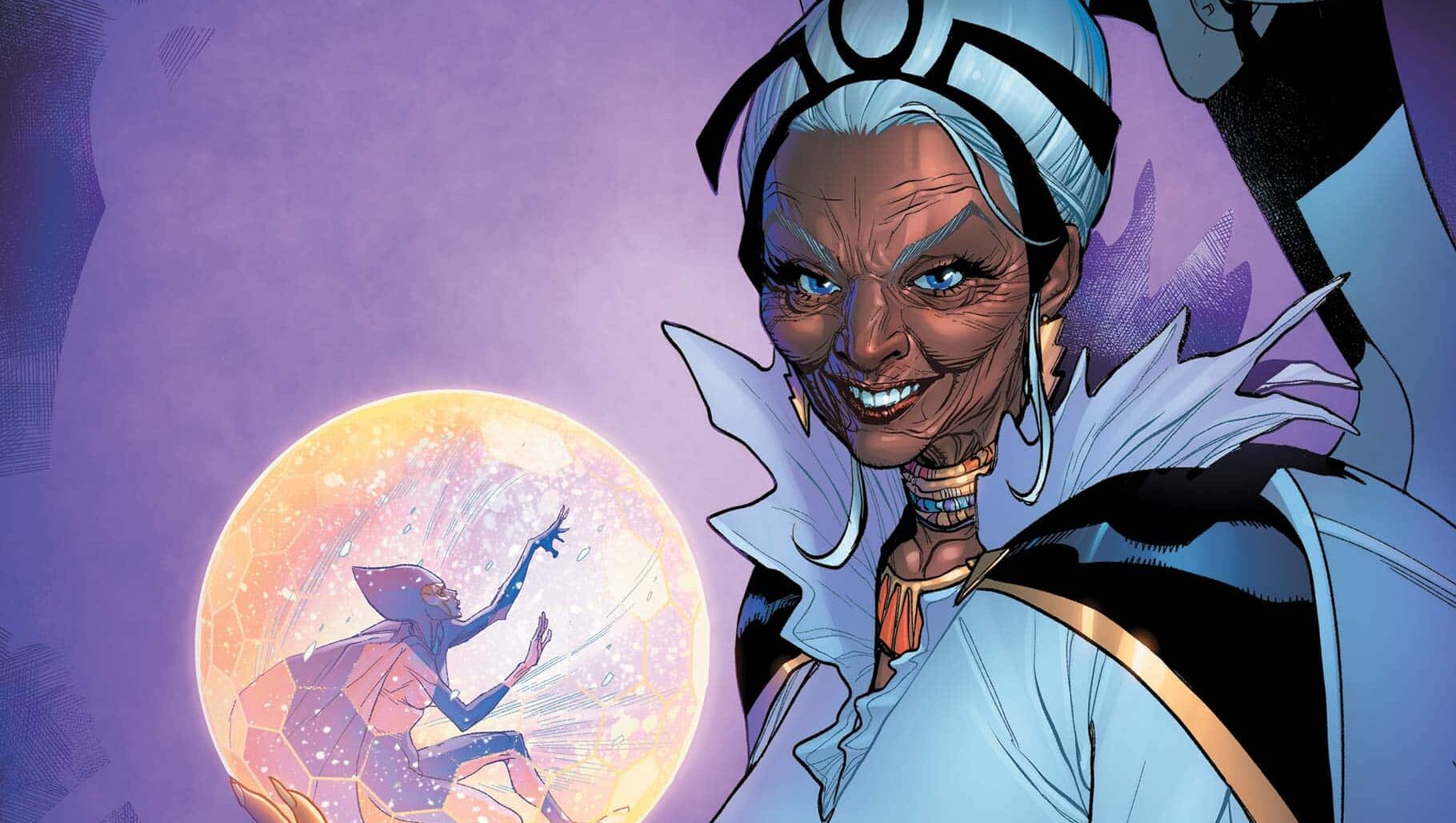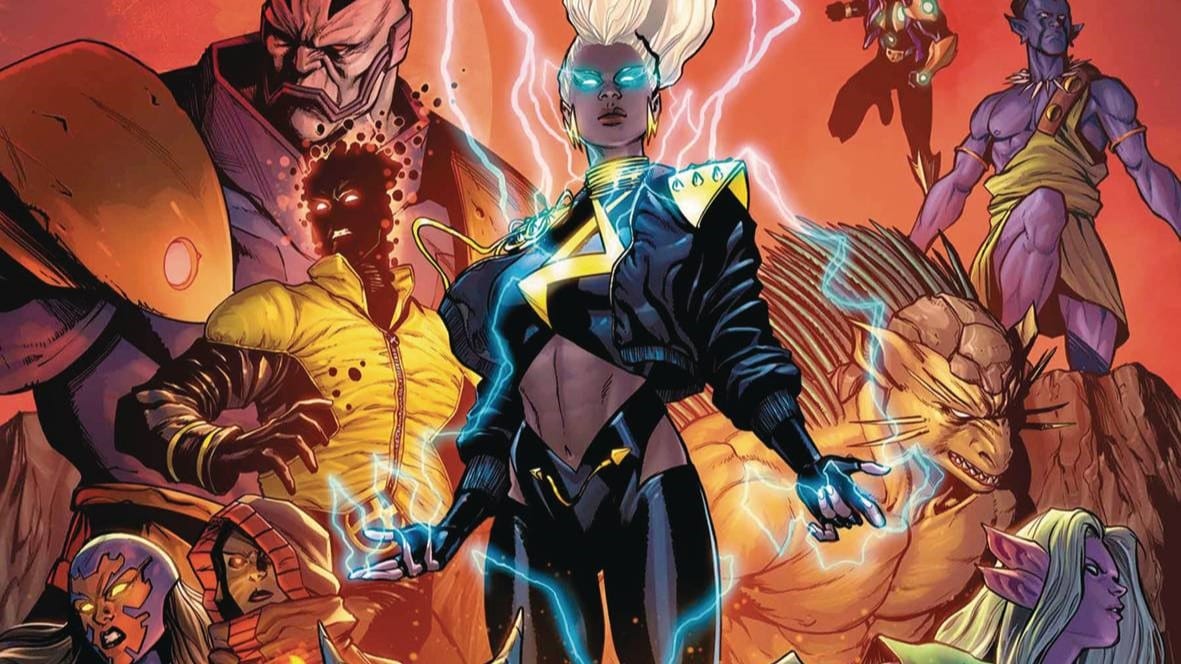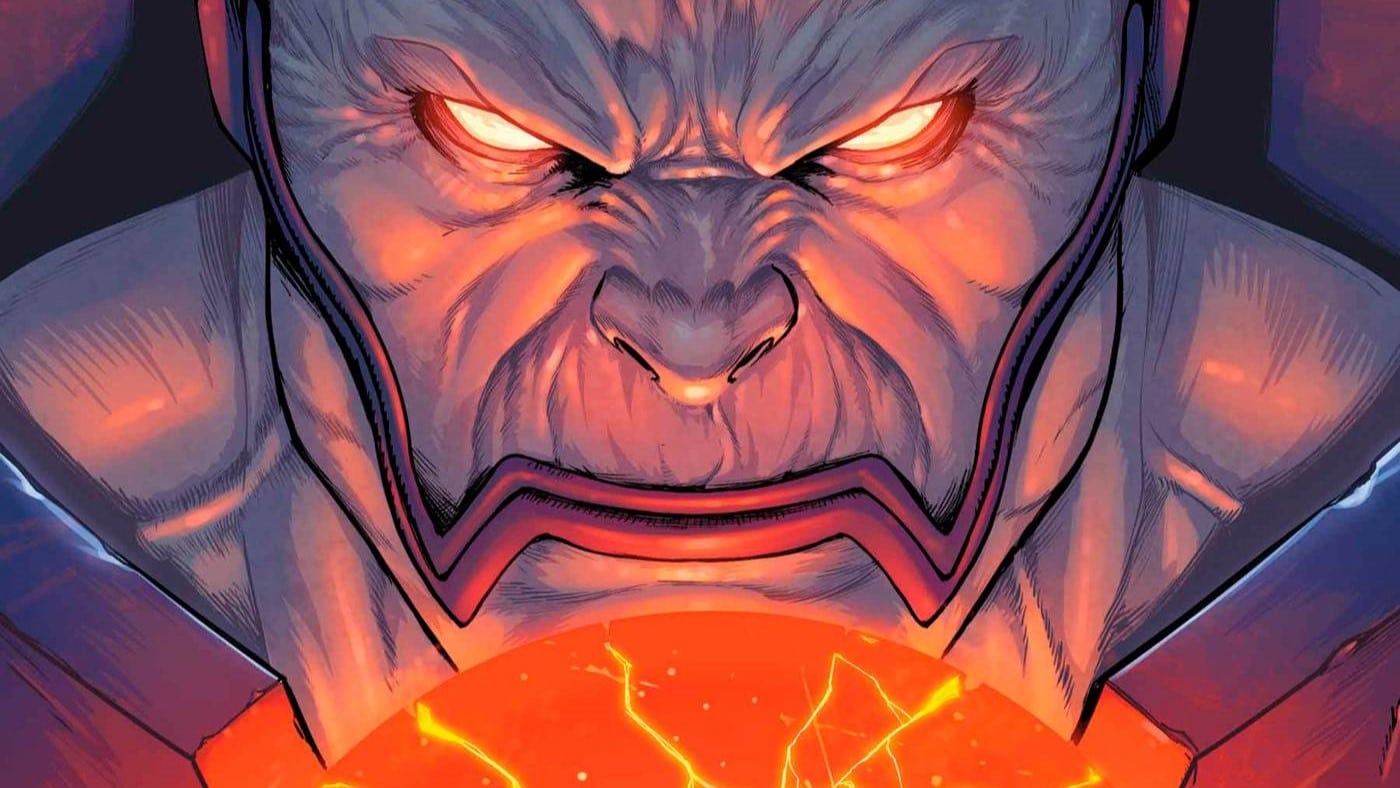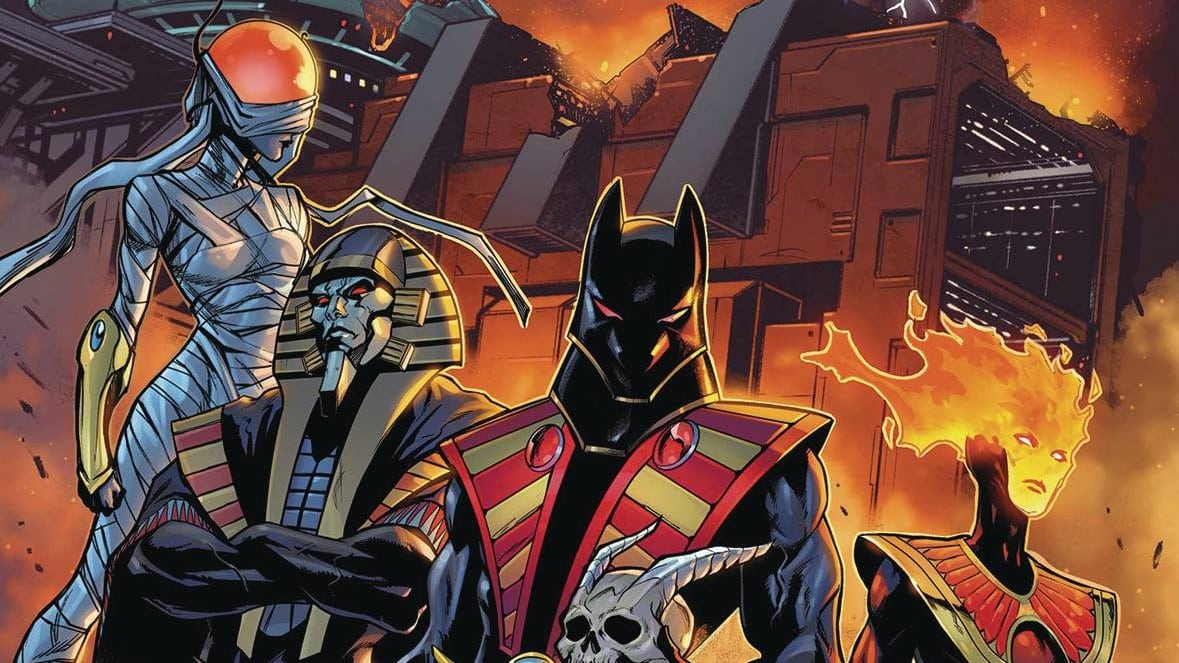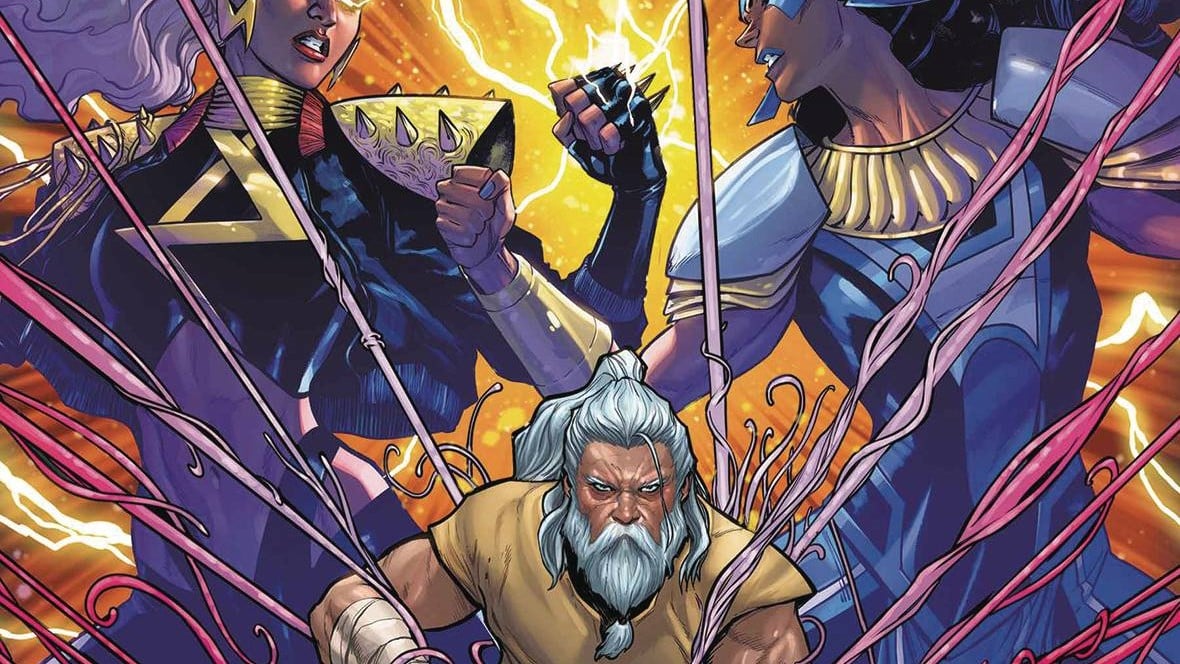The Sins Of Sinister continue bearing fruit in Storm And The Brotherhood Of Mutants #2 by Al Ewing, Andrea Di Vito, Jim Charalampidis, Rachelle Rosenberg and Ariana Maher.
Expectations are a (pick your curse word), aren’t they?
More than just a way to ensure disappointment, they color how we view people. View experiences. View art.
We expect our friends and partners to be present, so if and when they aren’t, it stings more. We expect our favorite show to remain excellent, so if it, say, falls off a (pick your curse word!) cliff in season 8 (and 7!) for no apparent reason, the sting is fresh.
So as you read Storm and the Brotherhood #2, maybe it’s best to let go of expectations. Al Ewing has unquestionably earned his place in the pantheon of amazing X-Writers: his work on SWORD and X-Men Red speak for themselves.
And yet, this is not SWORD or Red.
Storm is epic in scale, sure, accounting for over 100 years of drama and action. But there’s only so much of 100 years you can insert in 20 or so pages of a comic. So even though the scale of action is grand, even though the characters are interesting and varied, even though there’s action and intrigue, the lack of space to adequately develop these ideas and actions into an emotional connection means we leave the comic, though entertained, ultimately still wanting; disappointed our grand expectations were not fully met.
A Dire Destiny

Distilled to their essence, SWORD and Red are strong character studies.
Magneto piecing his heart back together; Isca’s “winning” gambits, Roberto’s laidback, intricate scheming – all explored over multiple issues with dialogue and data pages, culminating with action towards the end.
Thus the problem with Destiny’s characterization here: her motivations are explained all too quickly through exposition to Storm, and resolved (“resolved”) all too directly by sword slash. We don’t get time to examine the weight of what it’s been like to live for 100 years on the run; how living on the run, isolated with her love has shaped her; how losing her love, indirectly because of her desire to try to keep her love brought her to a place of desperation.
(Of note: I argue she knew to “end the universe” would result in her death alone; given her reason for living was lost, it’s likely she lost the will to fight or care.)
Does this make the comic bad? No, of course not. Her quips are still welcome, her unmasked tears still elicit empathy (even as her selfish actions don’t). Amplifying her powers to psychically guide the Rebel forces into the Sinister/Stellaris fortified Death Star (because that’s exactly what this is) makes perfect sense. Still, the execution feels less than exciting, more like watching a replay of a foregone conclusion than an experience unto itself.
Maybe that’s how Destiny views the world: a never ending rerun, where even the most exciting of things feels passé.
Maybe, after reading this issue, we should extend more empathy to her after all.
Ironfire in the Sky

Of empathy: Ironfire, the audience-surrogate, blood-metal bender whose guilt pushes him to fight for his Queen, certainly elicits some here. While taunted by the magical mother righteous Sinister, we see his pain, his motivation, his joy at fulfilling his purpose.
We want to connect with him as he attacks the Stellanis Star with the single minded focus of a religious zealot – a less powerful Exodus worshiping his Hope. But again, the lack of space and the necessary expanse of the story mean we don’t really get to know him: we don’t know his personality, his love and desires past his relationship to Storm, his motivations or dreams past winning the immoderate fight to avenge his mistakes in the Genesis War.
(Of note part two: mentioning the war two issues in a row, when we know Genesis and her Blue-hued baby daddy are set to return at the end of this event is not a coincidence. Also not coincidental: the anticipation of their return supersedes just about everything we’ve read here.)
Ironfire, like the other supporting characters – the Xilo-infused Cable now known as X-Man, Noh-Varr, Khora and Ganna (child of Loloo?) – don’t get much room to feel anything. And while this is fine, (really, it’s fine!), it’s not the standard we’re used to.
The Weather Witch

Storm’s chosen to live all these years; chosen to fight instead of taking the reincarnation route. She’s believed that life is precious, her connection to the Arakki solidifying her resolve.
Logically, faithful to this ethos, and quite beautifully, she extends this love and value of life to the entire universe. Rather than seeing people – people she’s known, people who’ve betrayed her, people she will never meet – as inconvenient aberrations that need to be corrected, she views all life, even life in a twisted, tormented reality, as worth saving.
So she does, with her life. Tapping into her for much too long underdeveloped magical heritage, she warps her comrades, the Progenitors, and the Morias to the far reaches of the galaxy, severing Stellains’ control and giving the universe something it hasn’t had in ages: hope.
(Of Note three: that the manifestation of her magical powers results in something very akin to Lactuca’s teleportation is very, very interesting.)
It’s significant that her death is a choice: she chose to burn out her body, to give of herself, to endure whatever stress and pain was necessary to ensure others spoof be able to live. That’s a wonderful synopsis of her character.
It’s also the problem with her character here: we, again, have to assume motivations, assume her goals and desires, because her autonomy, her actualized thoughts and feelings just aren’t there. Ewing did an excellent job of letting us in her heart during the opening salvo of Red: we learned from her lips she felt unease about being a queen (“no thrones on Arakko!”); we learned from her she harbored guilt for not doing enough for more people.
Here, we assume her motivations have stayed the same: assume that she’s the same person, 100 years in the future. We’ve seen her betrayed by her closest friends; we’ve seen her lose her planet and her people, but we never really get an understanding of what she feels, what motivates her outside of her desire to keep the light of life lit in the universe.
And again, this doesn’t make her characterization bad. This doesn’t make this comic or this series bad.
But that’s the thing about expectations: they make the perfectly good feel insufficient. Storm and the Brotherhood #2 is a perfectly competent comic, pushing the Sins of Sinister event forward in ways that feel character appropriate and interesting. It’s worth your dollars and worth the read.
I just wish it was worth a little more than that.
A proud New Orleanian living in the District of Columbia, Jude Jones is a professional thinker, amateur photographer, burgeoning runner and lover of Black culture, love and life. Magneto and Cyclops (and Killmonger) were right. Learn more about Jude at SaintJudeJones.com.

